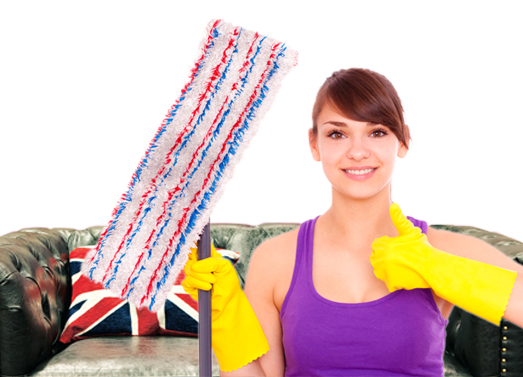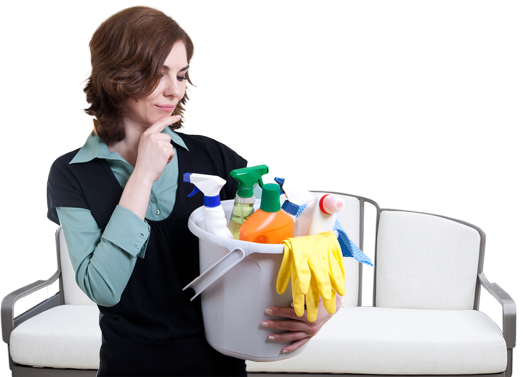Create a Refreshingly Mold-Free Bathroom Environment
Posted on 31/08/2025
Create a Refreshingly Mold-Free Bathroom Environment
Are you tired of stubborn mold patches creeping into your bathroom's corners and grout lines? Maintaining a refreshingly mold-free bathroom environment can seem like a challenge, but with proactive solutions and ongoing care, it's well within reach. This comprehensive guide will show you how to keep your bathroom mold-free year-round, combining proven cleaning techniques, smart design choices, and expert advice for a healthier, sparkling clean home.
Understanding Mold in Bathrooms
Mold is a fungus that thrives in humid, warm, and poorly ventilated spaces - conditions common in most bathrooms. Its presence is more than just unsightly; mold can cause structural damage and trigger allergic reactions in sensitive individuals. Over time, unchecked growth can even affect indoor air quality. Knowing the causes and typical hiding spots of mold helps you take effective action to create a truly mold-resistant bathroom.
What Causes Mold Growth?
- High Humidity: Frequent showers, hot baths, and poor airflow create the moist environment mold needs.
- Poor Ventilation: Without adequate air exchange, humidity lingers and accelerates mold development.
- Water Leaks: Dripping faucets, leaking pipes, and faulty seals provide a direct water source for mold spores.
- Organic Materials: Mold feeds on items like wood, grout, paper-based wall coverings, and even soap residue.

Signs of Mold in Your Bathroom
- Persistent musty odor that lingers even after cleaning
- Black, green, or brown spots along tile grout, caulk, or ceiling corners
- Peeling paint or wallpaper and warping wooden surfaces
- Health symptoms such as sneezing, coughing, or allergy flare-ups that worsen in the bathroom
If you notice any of these symptoms, it's important to address them quickly. Early intervention is crucial to minimize health risks and restore a mold-free bathroom environment.
Effective Steps to a Mold-Free Bathroom
1. Improve Bathroom Ventilation
Ventilation is your number one ally against mold. Here's how to ensure your bathroom stays as dry and fresh as possible:
- Install (and use) an exhaust fan: Run the fan during and after every shower or bath for at least 15-20 minutes. Ideally, choose a fan with a humidity sensor.
- Open windows and doors: Allowing fresh air to circulate rapidly reduces lingering moisture levels.
- Use a dehumidifier: In especially humid climates or windowless bathrooms, compact dehumidifiers work wonders.
2. Address Leaks and Water Damage Immediately
- Check under sinks, behind toilets, and around showers for leaks.
- Repair broken seals, grout lines, or cracked tiles quickly.
- Inspect plumbing fixtures regularly for signs of moisture buildup.
Pro tip: Damp towels and bath mats can quickly harbor mold. Always hang or spread them out to dry after each use.
3. Clean and Disinfect Regularly
Consistent cleaning breaks the mold reproductive cycle. Focus on trouble spots such as:
- Shower tiles and grout
- Bathtub rims and caulking
- Window frames and sills
- Behind and under sinks and toilets
Choose cleaning products specifically designed for mold removal, or use a homemade solution like white vinegar and baking soda. Make sure to rinse and dry surfaces thoroughly after each cleaning.
4. Use Mold-Resistant Materials
- Mold-resistant paint: Repels moisture and creates a less hospitable environment for spores.
- Mildew-resistant shower curtains and liners: Washable and more durable than standard vinyl options.
- Non-porous surfaces: Swap out wallpaper, carpet, and untreated wood for ceramic, glass, or sealed stone.
- Waterproof grout and caulk: Maintains tight seals to prohibit moisture seepage.
5. Maintain Humidity Levels
- Use a humidity meter (hygrometer): Ideal bathroom relative humidity is between 40-50%.
- Keep doors open after use: Maximizes airflow and helps dry out moisture quickly.
- Fix dripping taps and pipes: Every drop counts towards humidity in the air.
6. Declutter and Organize
- Remove unused toiletries and linens: Clutter traps moisture and restricts airflow, fostering mold growth.
- Use shelves and caddies: Keep items off damp surfaces and allow for better drying between uses.
- Wash towels and mats frequently: Use the hottest water suitable for the fabric to kill spores.
Natural Remedies and Green Cleaning for a Mold-Free Bathroom
If you prefer eco-friendly cleaning, here are natural alternatives proven to be effective in maintaining a mold-resistant bathroom:
- White Vinegar: Spray directly onto mold-prone surfaces, wait one hour, then wipe clean.
- Baking Soda: Create a paste with water, scrub into grout, and rinse thoroughly.
- Tea Tree Oil Solution: Mix a teaspoon of tea tree oil with a cup of water; spray and let it air dry for a natural anti-fungal effect.
- Lemon Juice: Natural acidity makes it useful for minor mold stains and leaves a fresh scent.
Be sure to test natural remedies on a small area first to ensure they won't damage your bathroom finishes. While these methods are suitable for maintenance and preventing minor outbreaks, severe infestations may require professional-grade cleaners.
Essential Design Choices for a Mold-Resistant Bathroom
Your bathroom's layout and materials play a major role in supporting a mold-free environment.
Optimal Bathroom Layout and Fixtures
- Choose walk-in showers with glass doors: These dry faster than enclosed tubs or poorly ventilated curtains.
- Install floating vanities and wall-mounted storage: Makes cleaning under and around cabinetry easier, preventing hidden mold spots.
- Consider radiant floor heating: Helps dry floors quickly and maintain balanced humidity.
Waterproof Lighting and Power Outlets
- Opt for fixtures rated for damp environments to prevent corrosion and mold growth inside light covers and outlet boxes.
How to Remove Mold from Different Bathroom Surfaces
Even with superb prevention, mold can sometimes take hold. Here's how to tackle specific surfaces:
Grout and Tiles
- Scrub with a stiff brush and a blend of baking soda and water, or use a mold remover spray.
- For long-lasting protection, re-seal grout lines every 6-12 months.
Caulking and Silicone
- If mold has penetrated caulk, it's best to remove and replace it entirely.
- Use mildew-resistant caulk for repairs.
Painted Walls and Ceilings
- Clean with a soft cloth and diluted white vinegar, being careful not to damage the paint.
- For large or recurring infestations, consult a professional, as this could indicate trapped moisture behind the wall.
Shower Curtains and Liners
- Machine wash with hot water and a cup of vinegar or baking soda.
- Replace any curtains that can't be thoroughly cleaned.
When to Call a Professional for Mold Inspection
Some mold problems are too extensive or persistent to tackle with cleaning alone. If you experience ongoing musty odors, discover large patches, or suspect water is trapped behind walls/under flooring, hire a licensed mold remediation expert. They have tools and expertise to identify the source and remove mold safely.
Long-Term Bathroom Maintenance Checklist
Stay ahead of mold with a simple bathroom routine:
- Wipe showers and tubs dry after every use
- Wash and dry towels and mats every few days
- Check corners and behind fixtures weekly for signs of mold growth
- Run ventilation fans or open a window every time you shower or bathe
- Declutter regularly and store items in closed cabinets where possible
- Deep clean grout, caulk, and tiles monthly
Building these habits will not only prevent bathroom mold, but also contribute to a clean, healthy home for your whole family.

Frequently Asked Questions: Mold-Free Bathroom Strategies
Can I really keep my bathroom mold-free?
Yes! While it's impossible to eliminate all mold spores, it's absolutely possible to prevent them from growing and spreading by managing moisture, cleaning regularly, and maintaining proper ventilation.
What's the best product for removing bathroom mold?
Specialty mold removers, bleach solutions (when used carefully), and natural options like white vinegar are all effective. For recurring problems, consult a professional-grade cleaning product or consider mold-resistant bathroom renovations.
How often should I clean my bathroom to prevent mold?
High-use bathrooms should be lightly cleaned (wiped down) at least twice per week, with a deeper clean (including grout and fixtures) every 1-2 weeks.
Is mold in the bathroom dangerous?
Certain types of mold (such as black mold, Stachybotrys chartarum) pose health risks, especially for people with allergies, asthma, or weakened immune systems. Always remove visible mold quickly and seek professional help for severe cases.
Conclusion: Enjoy a Refreshingly Mold-Free Bathroom Environment
Achieving and maintaining a mold-free bathroom environment is a combination of wise design, attentive cleaning, and everyday habits. By understanding mold's habits, choosing the right materials, and committing to consistent maintenance, you'll transform your bathroom into a refreshing, healthy retreat.
Take action today to prevent bathroom mold, protect your health, and enjoy a bathroom that stays sparkling clean and inviting all year long. With these expert-backed tips, your home's most-used room can become a true sanctuary!





